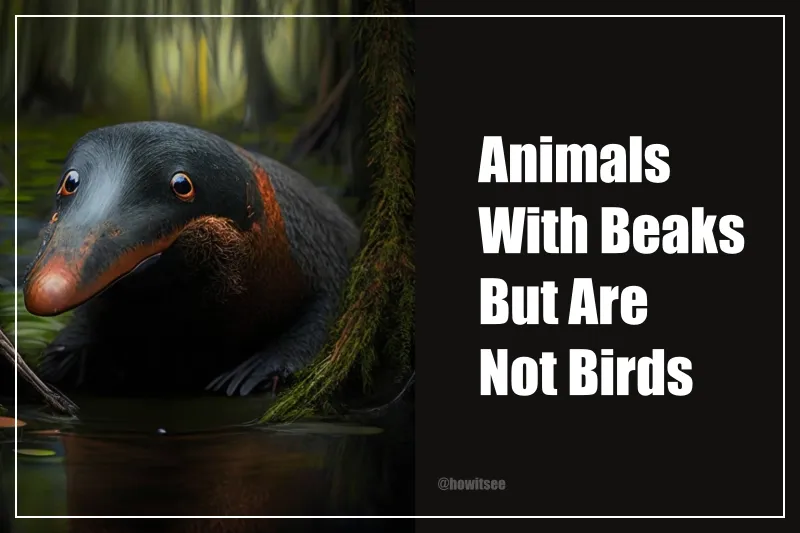Birds with their many, specialized beak forms frequently spring to mind when we think about beaks. But beaks are not just found in our feathery friends. There are several animals across different species and habitats that have beak-like features that have been tailored for certain functions.
These beaks, though distinct from bird beaks in many ways, play a crucial role in survival and daily activities. In this article, we embark on an interesting adventure to learn about 15 Animals with beaks but are not birds, from aquatic creatures to fascinating mammals and reptiles.
15 Animals With Beaks But Are Not Birds
1. Platypus
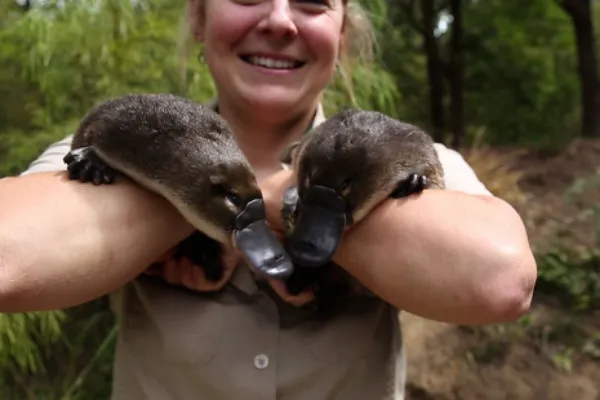
| Scientific name | Ornithorhynchus anatinus |
| Beak Color | Dark brown to Black |
| Diet | Worms, Shrimps, Crayfish |
| Location | Eastern Australia |
The platypus, a unique and fascinating animal, is frequently used as an analogy for Australia’s wide variety of species. Its bill, which resembles a duck beak, and the ability to lay eggs, distinguishes it from most mammals and are two of its most distinguishing traits.
The bill of the platypus is large, flat, and with delicate, velvety skin coat. It serves several purposes both, foraging and sensory.
The platypus’ beak has a variety of detectors that allow it to pick up vibrations, pressure changes, and electrical impulses sent by its prey in the water.
2. Alligator Snapping Turtle
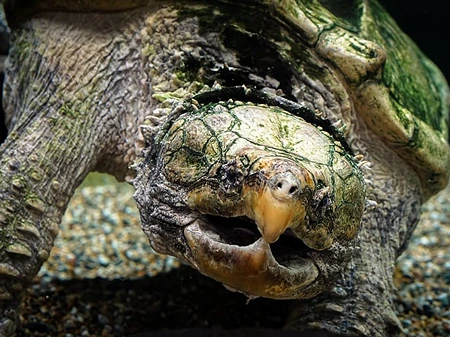
| Scientific name | Macrochelys temminckii |
| Beak Color | Dark Brown |
| Diet | Amphibians, fish, crustaceans, molluscs, etc. |
| Location | North America |
The nest animal on this list of Animals with Beaks is the Alligator Snapping Turtle. The alligator snapping turtle is the largest freshwater turtle species in North America, known for its massive size and powerful build.
The beak contains of strong, sharp ridges that enable the turtle to deliver a forceful bite, making it a formidable predator in its aquatic habitat.
It can clamp down on its prey with amazing strength thanks to its strong jaws and razor-sharp beak. Being an ambush predator, the turtle swiftly snaps its jaws shut, relying on its beak to secure a firm grip and immobilize its prey.
3. Green Turtle
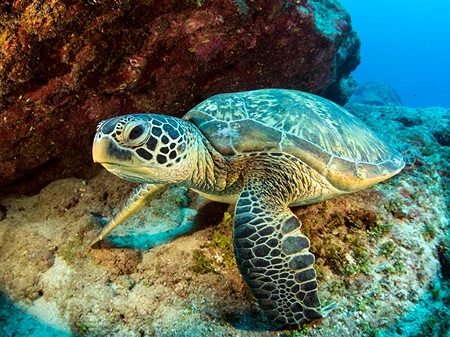
| Scientific name | Chelonia Mydas |
| Beak Color | Brown |
| Diet | Crustaceans and molluscs as hatchlings and sea grasses and algae as adult |
| Location | Australia, Costa Rica |
The dense coating of green-colored fat beneath its shell gives the Greed Sea Turtle its name. A green turtle can easily cut through foliage because of its slightly serrated beak. The turtle can graze around the ocean floor and consume diverse marine vegetation.
The beak is made of a tough, keratinous material, similar to that of a bird’s beak, providing strength and durability for feeding.
4. Hawksbill Sea Turtle
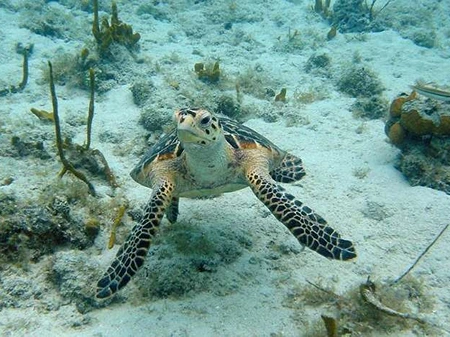
| Scientific name | Eretmochelys imbricata |
| Beak Color | Yellow |
| Diet | Sponges, sponges, jellyfish, sea anemones, shrimp, and crabs |
| Location | Tropical waters of Pacific, Atlantic and Pacific |
The beak of the Hawksbill turtle is distinguished by its sharp, pointed form that resembles a hawk’s beak. They can eat a variety of food with the use of their beak, including sponges, jellyfish, sea anemones, shrimp, and crabs.
The sharp beak helps them grasp and tear apart their prey, allowing them to consume their food efficiently. Hawksbill turtles also eat marine plants like algae and seagrass in addition to animal meals.
They can scrape and bite off bits of plants with the help of their beak. Given that hawksbill turtles play a part in regulating both animal and plant populations, this food diversity is crucial for maintaining a healthy environment.
5. Loggerhead Sea Turtle
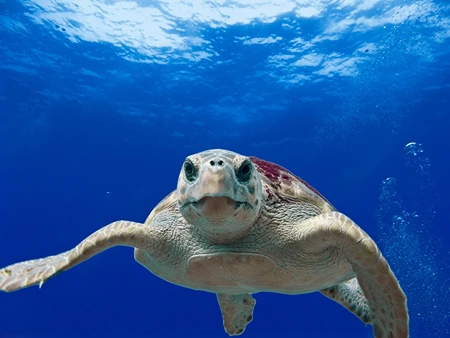
| Scientific name |
|
| Beak Color | Yellow to light brown |
| Diet | Crabs, molluscs, horse-shoe crabs |
| Location | Sub tropical Atlantic Ocean |
Loggerheads are the biggest hard-shelled turtle in the world with bigger heads when compared to other sea turtle species.
The loggerhead turtle’s beak’s main purpose is to aid its eating behavior. As carnivorous creatures, loggerheads eat mostly crustaceans and other invertebrates that live on the ocean floor.
With the help of its beak, the turtle can break through the tough shells of its prey and get at the tasty meat within. For the loggerhead turtle to survive, its beak must be strong.
It can pierce its prey’s impenetrable exoskeletons with a single bite, gaining access to the nutritious flesh inside.
6. Kemp’s Ridley Sea Turtle
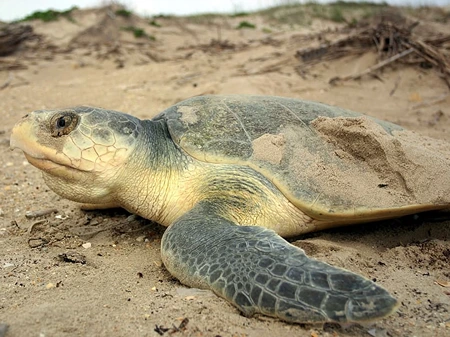
| Scientific name | Lepidochelys kempii |
| Beak Color | Yellowish |
| Diet | Crabs, shrimps, mussels |
| Location | Coastal areas of Canada and USA |
The next animal on this list of Animals with Beaks is Kemp’s Ridley Sea Turtle. The smallest of all sea turtles, the Kemp’s Ridley Sea Turtle gets its name from its discoverer Richard Kemp.
Their beaks are hooked and are quite powerful with a large surface for crushing. This is immensely helpful as its diet mainly comprises of animals where the outer shells need to be crushed before eating.
7. Giant Squid
| Scientific name | Architeuthis dux |
| Beak Color | Black to brown |
| Diet | Other squids, and fishes |
| Location | Worldwide |
The Giant squid is a fabled monster of the deep water, renowned for both its immense size and its elusiveness. Among its fascinating features is its beak, a unique adaptation that plays a crucial role in its feeding and survival.
The giant squid’s key eating structure is its beak, which is situated in the middle of its tentacles. It is made of a tough, chitinous substance that offers durability and strength.
Considering the giant squid’s entire size, the beak is very small, yet it is extraordinarily strong and sharp. The squid can more easily consume and digest its prey by cutting through the resistant outer layers with the help of its razor-sharp beak.
8. Giant Pacific Octopus
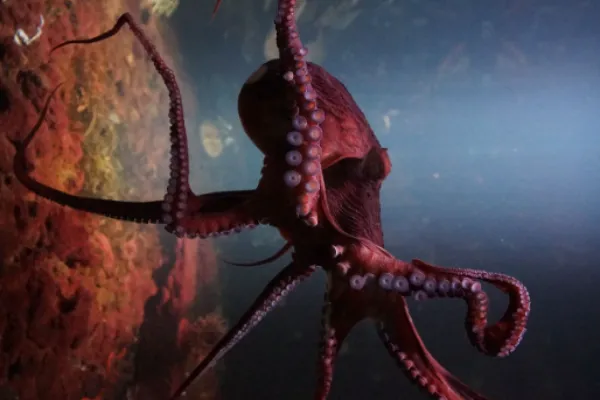
| Scientific name | Enteroctopus dofleini |
| Beak Color | Brown to Black |
| Diet | Shrimps, crabs, snails etc. |
| Location | Coastal North Pacific |
The Giant Pacific Octopus has a hard, pointed, and parrot-like beak that is situated in the middle of its tentacles. It is composed of chitin. The Giant Pacific Octopuses have has two mandibles or beaks, that are utilized for catching and eating prey.
The octopus feeds on organisms which have hard outer shells that must be cracked to get into the soft flesh inside.
9. Common Octopus
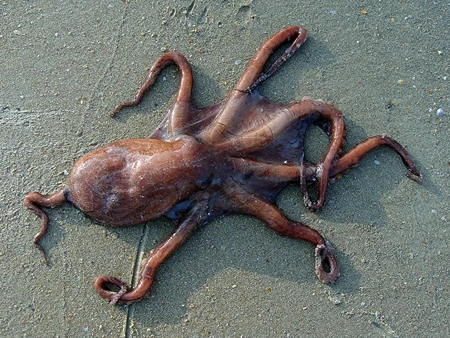
| Scientific name | Octopus vulgaris |
| Beak Color | Black to brown |
| Diet | Crabs, molluscs, crayfish |
| Location | Worldwide |
The octopus, a cephalopod mollusc, has a beak that is similar to that of other individuals in its taxonomic family but has unique features of its own.
A typical octopus’s beak is comprised of the tough and flexible substance chitin and is situated in the middle of its tentacles. It is made up of two mandibles, which are the top and lower jaws of the beak, much like a parrot’s beak.
10. Black Spotted Puffer
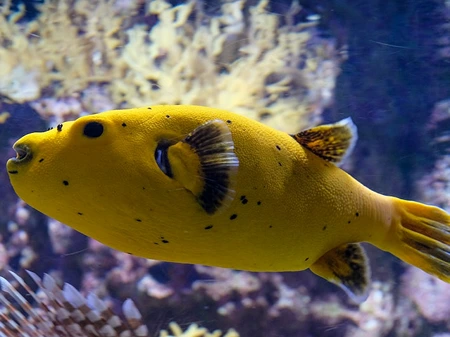
| Scientific name | Arothron nigropunctatus |
| Beak Color | White to Yellow |
| Diet | Corals, Sponges, Algae, Mussels |
| Location | Indian and Pacific Ocean |
Next up, on this list of Animals with beaks, we have the Black Spotted Puffer. Pufferfish, commonly referred to as blowfish or balloonfish, are well-known for their capacity to swell into a huge, spiky ball as a means of defense.
Similar to the beaks of other fish species, the black-spotted pufferfish’s beak is a powerful and sharp structure comprised of keratin.
Pufferfish can easily break open the shells of different invertebrates, such as crabs, mollusks, and tiny clams, thanks to their strong beaks.
11. Fahaka Puffer
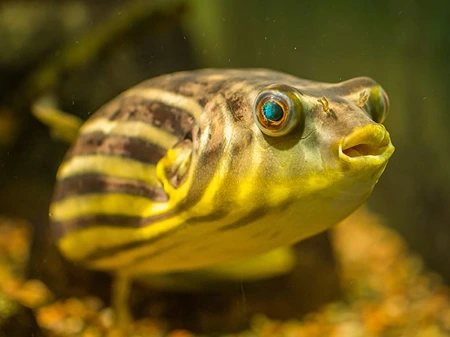
| Scientific name | Tetraodon lineatus |
| Beak Color | Yellow |
| Diet | Snails, Mussels |
| Location | Africa |
The Fahaka Puffer’s beak is a special feature that we can see in the majority of Puffer species. Puffers use it to bite and break food and is situated at the front of the fish’s mouth.
The Fahaka Puffer can eat a range of food, such as crabs, mollusks, and small fish, thanks to its powerful and razor-sharp beak.
The Fahaka Puffer’s beak is particularly well-adapted for cracking open the shells of snails and other shell bearing organisms.
12. Dana Octopus Squid
| Scientific name | Taningia danae |
| Beak Color | Unknown |
| Diet | Crabs, fishes |
| Location | Worldwide |
The Dana Octopus Squid, like other Squid species in this list of animals with beaks, has a unique feature, a beak to help them survive. The beak is hard and razor-sharp, that can quickly snap, and break open the shells of crabs, fishes etc.
These shells aren’t digestible or nutritious and therefore Squids remove them before eating the soft flesh inside.
13. Galapagos Giant Tortoise
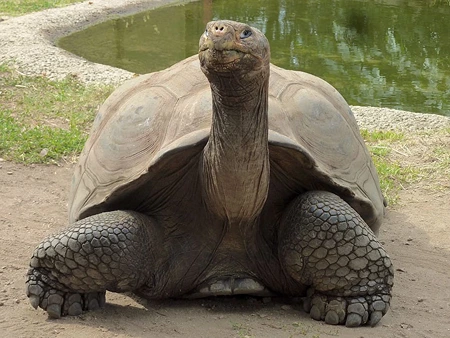
| Scientific name | Chelonoidis niger |
| Beak Color | Brown |
| Diet | Grasses, cacti, fruits |
| Location | Galapagos Islands |
Galapagos Giant Tortoises are iconic creatures, characterized by their large size. The beak of the Galapagos Giant Tortoise is tough, contains keratin, and powerful that perfectly adapts to its herbivorous diet.
It is hard and serrated, enabling the tortoise to efficiently grasp and tear vegetation. The beak’s design makes it ideal for breaking through strong plant stems as well as cropping grasses and nibbling on leaves.
14. Atlantic Pygmy Octopus
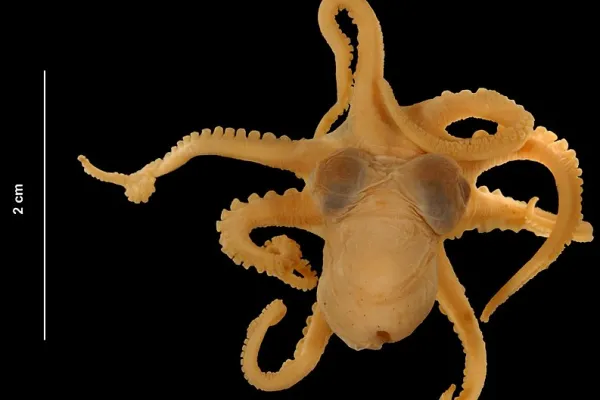
| Scientific name | Octopus joubini |
| Beak Color | Unknown |
| Diet | Small Crustaceans |
| Location | Atlantic Ocean |
As we are slowly nearing the end of our article on Animals with beaks, the second last animal that we are going to talk about is the Atlantic Pygmy Octopus.
Like other octopus species, Atlantic pygmies too possess a powerful set of beaks, that enables them to crush their prey easily.
15. Robust Clubhook-Squid
| Scientific name | Onykia robusta |
| Beak Color | Black |
| Diet | Jellyfishes and small fishes |
| Location | Worldwide |
Like other squid species, it possesses a beak, which is a prominent feature that helps it with feeding. The beak of the Robust Clubhook Squid is a hard, sharp, and chitinous structure located at the center of its tentacles.
The beak is strong and sharp, allowing the squid to tear apart the prey’s tissues and consume it.
Now its time to conclude this article on Animals with Beaks. Hope you have liked it. Stay tuned for many more articles on various topics, in the near future. Until then, stay tuned.
References:
- OctoNation- Do Octopus Have Beaks
- allturtles.com- Hawksbill Turtle
- allturtles.com- Kemp Ridley’s Sea Turtle
Also Read:

A zoology student turned writer. Nature has always been a magnet to me, and to unearth some of its secrets through my articles is my prime intention. If not engaging myself with nature and anime content, you can always find me going through some Bengali classics or filling the air with some soulful Tabla beats. An artist, trying to throw some colors to my blank canvas of life.
